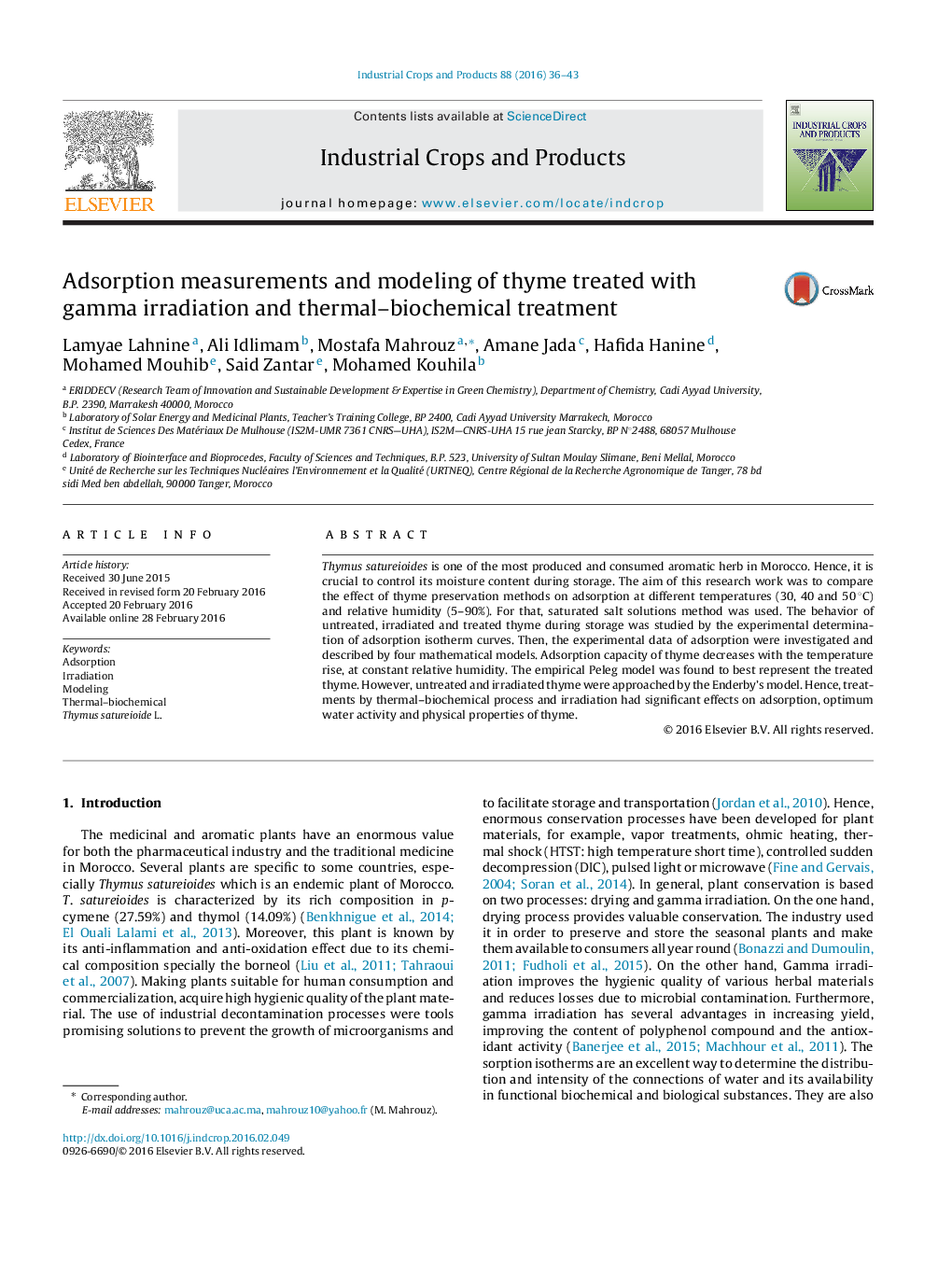| Article ID | Journal | Published Year | Pages | File Type |
|---|---|---|---|---|
| 4512186 | Industrial Crops and Products | 2016 | 8 Pages |
•The thyme adsorption isotherms are sigmoid type II.•The storage temperature influences adsorption.•Enderby and Pelig’s models allow the best prediction for witness and conserved thyme.•The conservation process changes the absorption and the physical properties.
Thymus satureioides is one of the most produced and consumed aromatic herb in Morocco. Hence, it is crucial to control its moisture content during storage. The aim of this research work was to compare the effect of thyme preservation methods on adsorption at different temperatures (30, 40 and 50 °C) and relative humidity (5–90%). For that, saturated salt solutions method was used. The behavior of untreated, irradiated and treated thyme during storage was studied by the experimental determination of adsorption isotherm curves. Then, the experimental data of adsorption were investigated and described by four mathematical models. Adsorption capacity of thyme decreases with the temperature rise, at constant relative humidity. The empirical Peleg model was found to best represent the treated thyme. However, untreated and irradiated thyme were approached by the Enderby’s model. Hence, treatments by thermal–biochemical process and irradiation had significant effects on adsorption, optimum water activity and physical properties of thyme.
